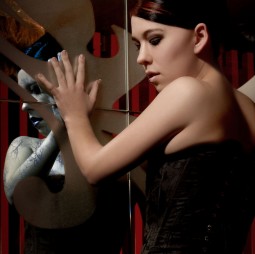What You See Isn’t What’s There
 “The mind of the observer is integral to determining the nature of reality.”
“The mind of the observer is integral to determining the nature of reality.”
~ Alberto Villoldo, “Dance of the Four Winds”
As I’ve said before, the surface view is the most limited view. I see it over and over in living my life and in working with my clients – what we see isn’t what’s there. Our interpretation is what creates the reality. And when we don’t like the reality, sometimes we just have to change the lens we’re seeing it through to see something different.
That probably sums up a lot of my work with people, actually. By natural design, we cannot see ourselves and so we need either a mirror or someone to reflect us back to ourselves. The quality of the mirror determines the quality of the reflection. And the same goes for our view of reality – if our internal mirror is flawed, we will see a skewed reality. When people are drawn to work with me, it’s usually an indicator that they’re ready for a new mirror, or viewing lens.
The other thing to know about seeing what is or isn’t there is that it depends on where we are in our life learning curve. We have a harder time seeing what it is that we need to learn; that is, if we already know something, we know what it is. If we can’t see something, it’s likely to be one of our life lessons. We can’t see it yet because we have to learn it. And we all have those things we can’t see – they’re our personal blind spots that represent our best growth potential.
Anyway, to get back to the subject, what we see isn’t what’s there – it’s only our perception that is telling us what’s there. The surface view is the most flat visual to work from…it’s when you go below the surface that you discover the real substance of the situation, relationship, or opportunity. And that’s where the real power lives to create more of what you want – it’s there that you will find more of the truth as opposed to what you can interpret from the surface view.
3 Things You Can Do Today:
1) Look at your external mirrors. Check out your environment, the people and relationships around you, the shows you watch and what you read to get clues as to what and how your brain is processing – how you are relating with your world. Remember that you are a dynamic, growing being; over time, what used to be enough may no longer support you. If you discover that there is a disconnect from what you thought was there and what is, it’s time to see what’s really there now. And if you need new or better mirrors, this is the time.
2. Consider what isn’t working for you. That is, take a look at your concerns, anxieties, tolerations, frustrations and insecurities in order to get a fix on your internal mirrors. We only experience friction, or resistance, where there is something that needs to be addressed or learned. Sometimes we don’t see or know what we want, but we always know what we don’t want. Understanding the places where you feel rubbed the wrong way could be your starting point to seeing things differently.
3. Value yourself. While this is a play on words, another way to tease information on what you’re not seeing is to write down your top life values in random order. Once you have that, go back through and find the top ten. Go through those to get the top 3 – 5 values, and compare their importance to how they are showing up in your world. If they aren’t, it’s time to make some changes. For example, if you value physical wellness, but aren’t taking care of your body, you now have a message about your next step. Brainstorm with yourself on how to create more alignment with your inner values and your outer world.
The next time you think you know what you are seeing, try looking at it in a new way, from a different perspective and with what spiritual-types call the “beginner’s mind”. It’s guaranteed to bring you a new relationship with yourself, your world and your truth.